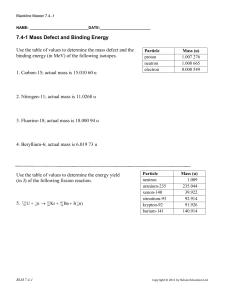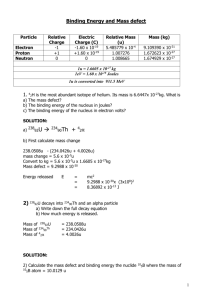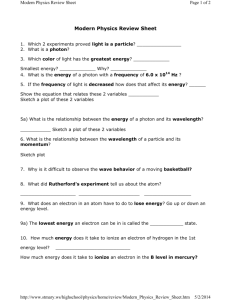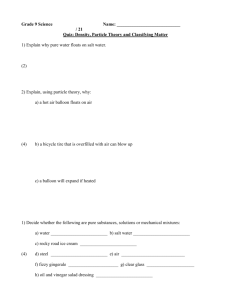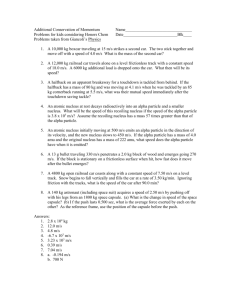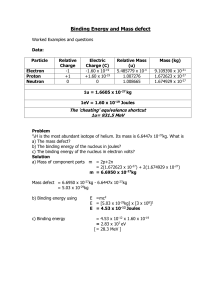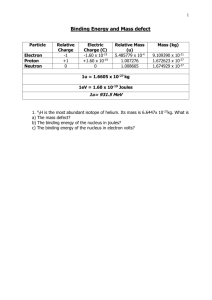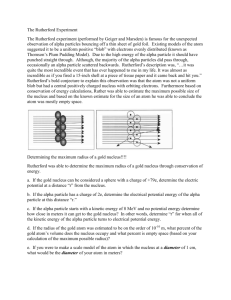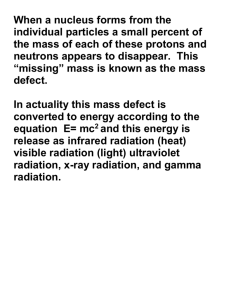Binding Energy and Mass defect
advertisement
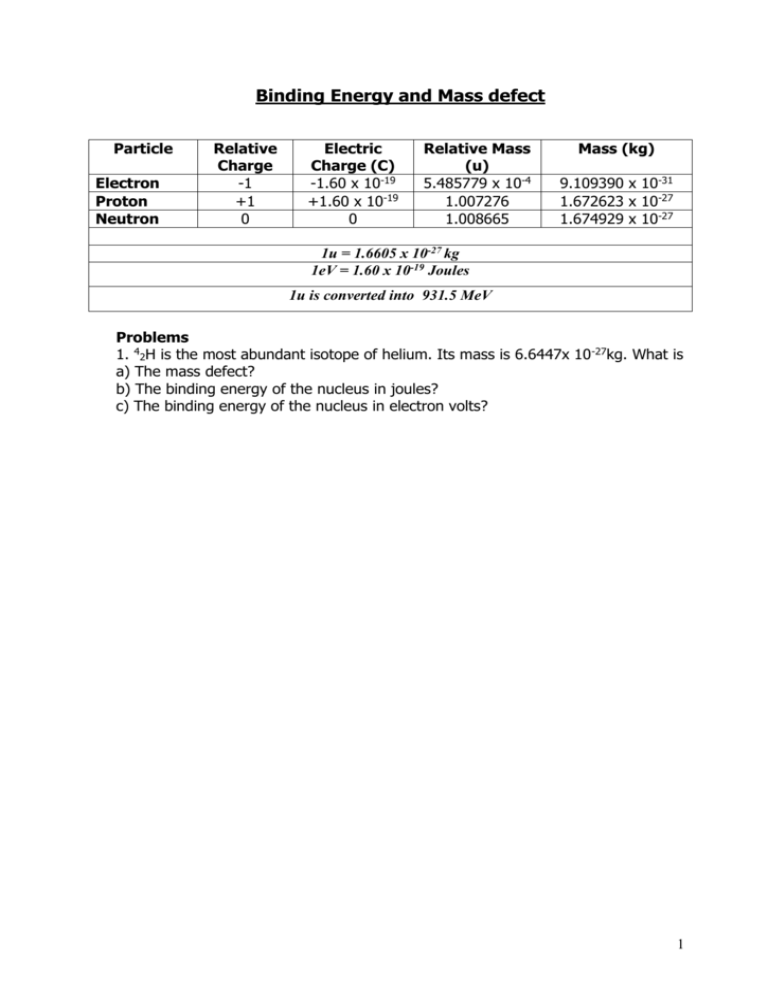
Binding Energy and Mass defect Particle Electron Proton Neutron Relative Charge -1 +1 0 Electric Charge (C) -1.60 x 10-19 +1.60 x 10-19 0 Relative Mass (u) 5.485779 x 10-4 1.007276 1.008665 Mass (kg) 9.109390 x 10-31 1.672623 x 10-27 1.674929 x 10-27 1u = 1.6605 x 10-27 kg 1eV = 1.60 x 10-19 Joules 1u is converted into 931.5 MeV Problems 1. 42H is the most abundant isotope of helium. Its mass is 6.6447x 10-27kg. What is a) The mass defect? b) The binding energy of the nucleus in joules? c) The binding energy of the nucleus in electron volts? 1 2) 238 decays into 23490Th and an alpha particle a) Write down the full decay equation b) How much energy is released. 92U Mass of Mass of Mass of 238 U 92 234 Th 90 4 α 2 = 238.0508u = 234.0426u = 4.0026u 3) Calculate the mass defect and binding energy the nuclide of 105B atom = 10.0129 u 10 B 5 where the mass 2 4) Oxygen has an unstable isotope O-17 that has a mass of 17.00454. If the mass of a neutron is 1.00898 u and the mass of a proton is 1.00814 u, calculate the binding energy of the oxygen nucleus in MeV. 5) A thorium atom of mass 232.038 u decays by the emission of an alpha particle to a radium atom of mass 228.031 u. If the alpha particle has a mass of 4.003 u, how much energy in J is released in the process ? 3 6) The fusion reaction below is one of the final stages in the fusion process that occurs in the Sun. 2H + 1 3H 1 4He + 2 (a) Complete the reaction identifying the missing particle. (b) Calculate the energy released in the fusion reaction using the following information (you will also need the mass of the other particle). 2H = 3.345 x 10-27 Kg 5.008 x 10-27 Kg 1 3H 1 4He 6.647 x 10-27 Kg 2 4
